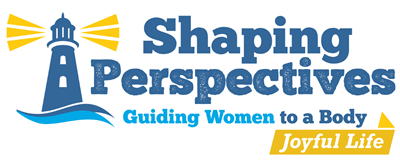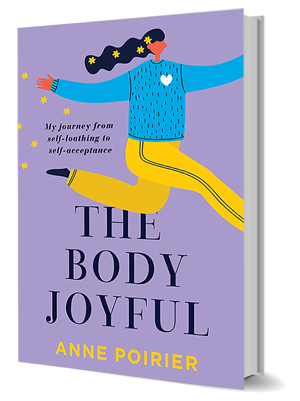Does it seem like the word “self-care” is popping up in newsfeeds, papers, magazines, on TV, and just about everywhere else you look?
As it turns out, there’s a good reason we’re seeing and hearing this word so much: self-care can play an incredibly powerful role in our wellbeing.
That’s why we’re going to take a closer look now at what this word actually means. This journey won’t end today—over the course of the next month, we’re going to dive right in.
What does self-care mean to you?
Most of the time, you’ll see self-care defined as action taken to preserve or improve one’s health, or taking an active role in protecting one’s own wellbeing and happiness.
Self-care is one of Shaping Perspectives’ five foundations.
Our perspective looks a lot like this:
Self-care is not just about manicures and massages—it’s much, much more.
It’s not a luxury, it’s a necessity.
As you look at the definition of self-care, ask yourself what it means to you.
If you already practice self-care in your life, how do you utilize this tool? And an even more important question is: how do you know when you need it?
Determining your need for self-care is the first step in practicing it.
You need to be aware of when you need it. You also need to know what kind of self-care will work for you in a given situation.
Not taking care of yourself can actually create disease, depression, and major chaos in your life. To help you determine when you need time to take care of yourself, look for physical and emotional signs that could be telling you you need to take a break.
Physical signs that you might need to practice self-care:
- Insomnia
- Digestive issues
- Headaches
- Being tired
- Weight gain
- Body aches and pains
- Feelings of overwhelm
- Lack of focus and concentration
Emotional signs that you might need to practice self-care:
- Snappy, sharp, snarky
- Moody
- Isolation
- Anxiety and/or depression symptoms
- Low self-esteem
- Increased negative self-talk
- Quick to anger or short-tempered
- Confrontational
- Overly sensitive
Do any of these signs sound familiar to you?
Our nervous system response.
We live in a state of chronic stress in today’s world.
Which means we’re living within the sympathetic nervous system.
This is when our body fires up our fight/flight/freeze response, which was originally meant to react to true life-threatening experiences (like coming face-to-face with a tiger)—it was not designed to be on 24/7.
Self-care, on the other hand, elicits the parasympathetic nervous system (PNS).
This is the relaxation response that decreases stress and increases calm and rest.
Most doctors today know how important it is for people to spend more time in this state, this relaxed space, and one reason self-care has become so popular.
This being said, knowing when you’re in need of a break (you’re in fight/flight/freeze mode) is key for the implementation of your own self-care.
So, do you know what your personal physical and emotional signs are? If not, now is a great time to pause for a moment and think about it.
Becoming aware is the key to creating a daily self-care routine. But just knowing you need self-care might not be enough.
Are you sabotaging yourself?
It’s common for some people to have some self-sabotaging thoughts.
Do you find yourself thinking:
- You don’t deserve self-care?
- Self-care is selfish?
- You don’t have time for self-care?
- It isn’t going to make a difference in your life?
- People will think you’re being self-centered or egotistical?
- Self-care is stupid?
If so, know you’re not alone. These beliefs and this self-talk is what you’ve picked up throughout your life’s journey. They can keep you from living a healthier and happier life.
I’ve written an entire post on 3 steps for more positive self-talk. You won’t want to miss it.
But if you’re ready to make a change and look at self-care from a different perspective, then you’re in the right place! We have you covered.
Beginning your self-care journey.
To get you moving into your relaxation and rest state (PNS) right away, here is the easiest and quickest way to start the self-care process. It’s as simple as breathing!
Studies now show that just a few minutes of deep breathing can lower stress, increase focus, reduce overwhelm, and increase energy.
So, since you’ve already spent a few minutes reading this blog, why not add just a few more?
Take a moment to close your eyes and focus in on your breath. Try this easy 4 – 7 – 8 count breathing exercise:
Take a deep breath in for the count of 4, pause for a count of 7, exhale for a count of 8.
Repeat this 4 – 7 – 8 breathing exercise for four cycles, and notice how you feel.
This type of breathing exercise triggers the parasympathetic nervous system and helps to counter our daily stressful lives.
I also encourage my clients to utilize journaling in their self-care practice. Read about some other benefits of journaling here.
In our next blog, we’re going to share an activity called the Self-Care Toolbox.
This is an exercise I use with all of my clients, to help them find which activities and actions will kickstart their self-care journey.
Stay tuned for more great information next week, to help you get into your PNS—life is good there.
If you’re willing to shift your perspective around certain beliefs, you too can lower your stress levels and improve your health right here and right now.
Want to try to look at it differently but don’t know how? Click here for a self-care chat.
If you enjoyed this article, you won’t want to miss these either:
Benefits to a Playful Approach to Exercise
Journaling to Boost Your Mood
9 Steps to Ultimate Self-Acceptance


